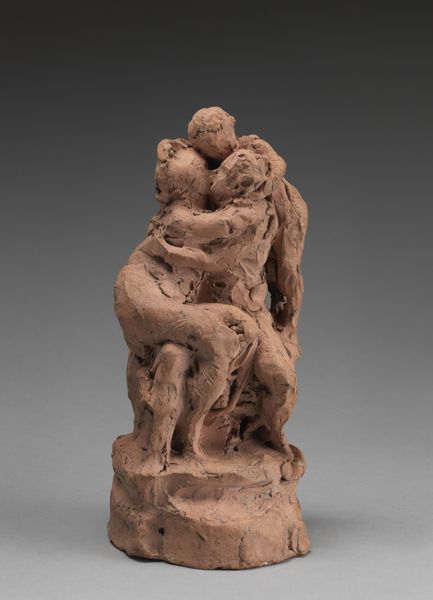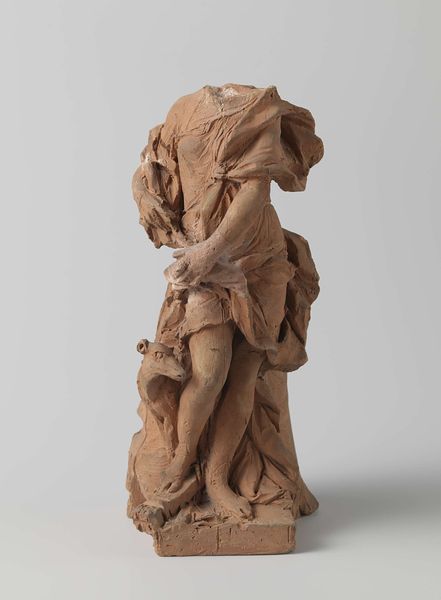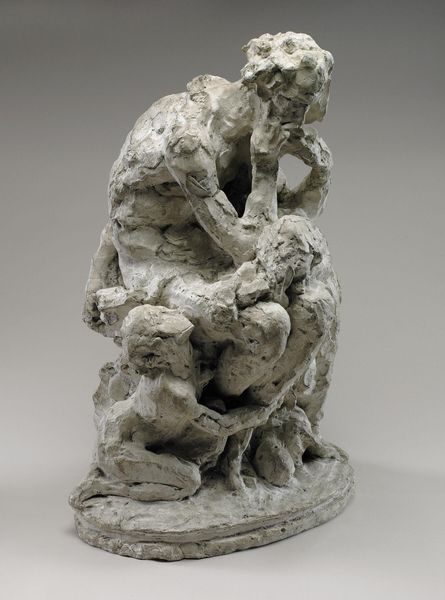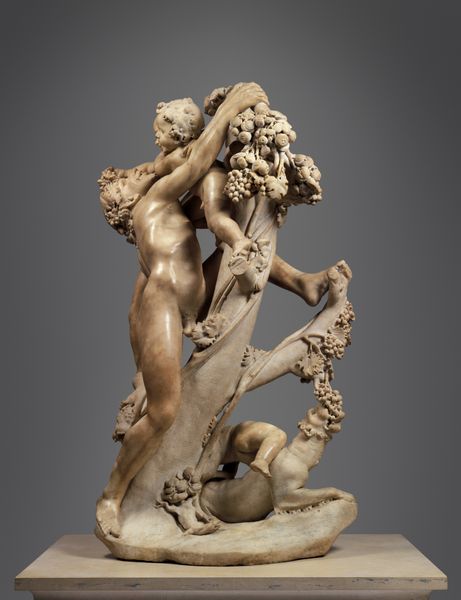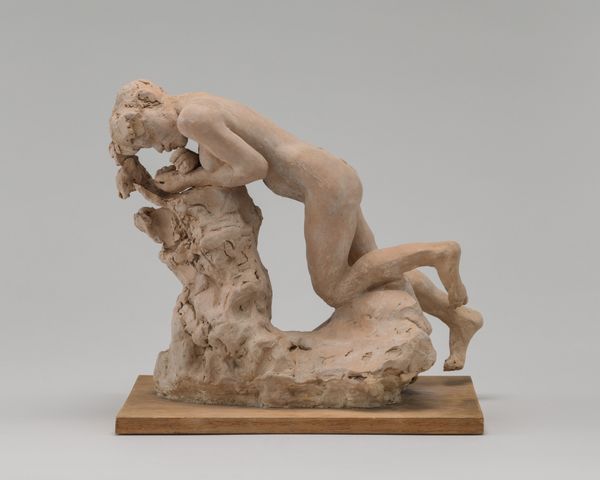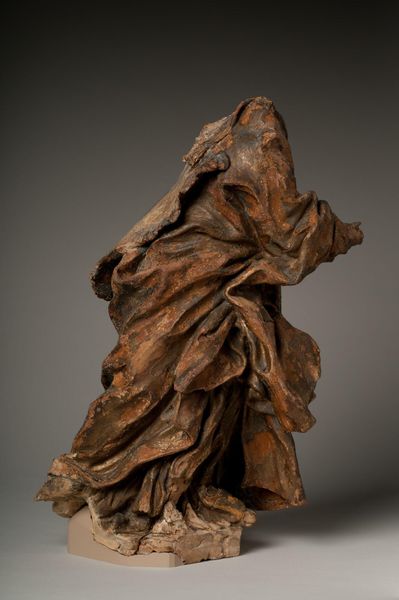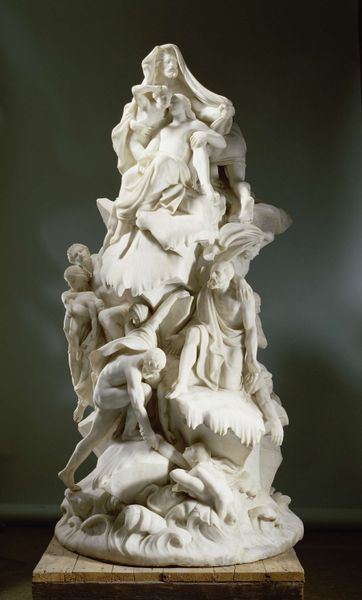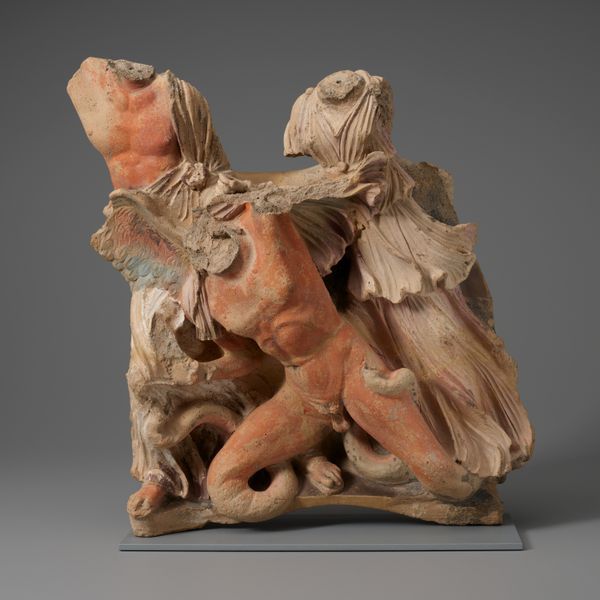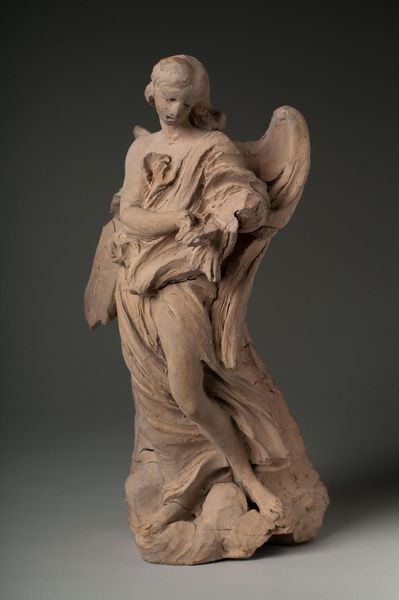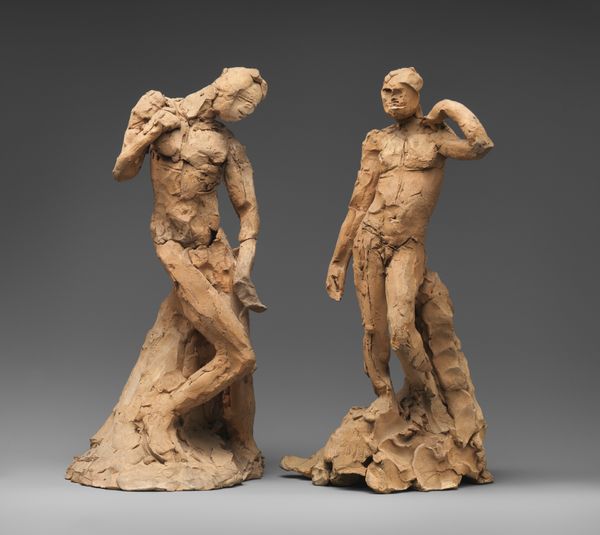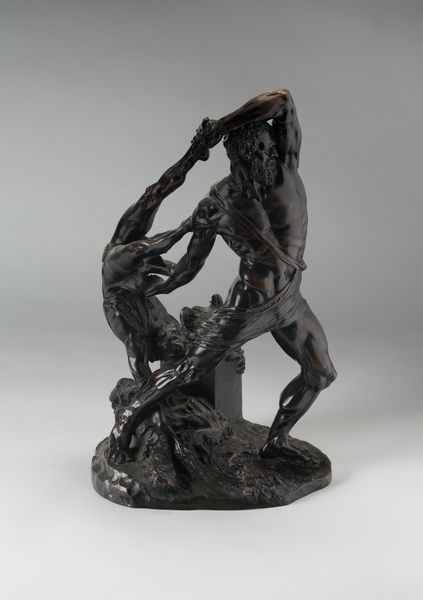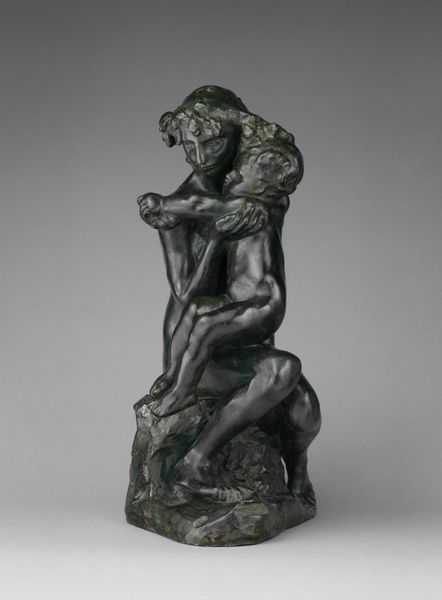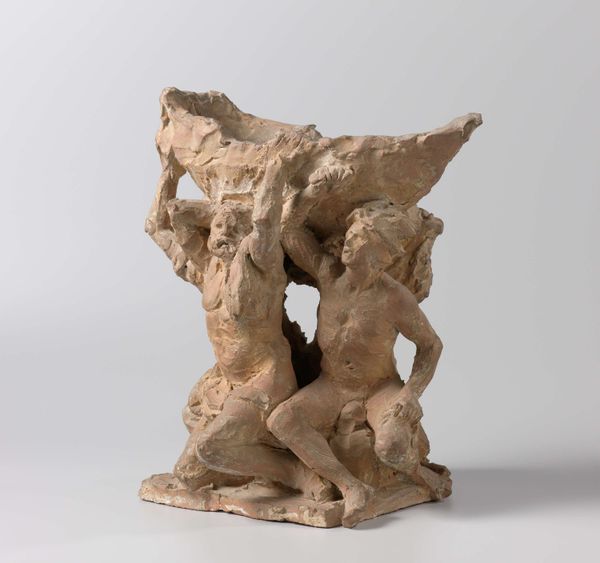
sculpture, marble
#
statue
#
baroque
#
stone
#
sculpture
#
figuration
#
sculpture
#
history-painting
#
marble
#
statue
Dimensions: 71 × 79 × 46 cm
Copyright: Public Domain
Curator: This stunning marble sculpture, titled Pietà, was crafted around 1686 by the Genoese artist Filippo Parodi. It currently resides here at The Art Institute of Chicago. Editor: It's immediately striking how intensely emotional it feels. The lines of grief are so sharp in Mary's face, while Christ looks utterly still. There is also such stillness in the angel's presence. Curator: Parodi’s Baroque style certainly amplifies the drama. Considering the historical context, we have to remember the powerful influence the Catholic Church had in shaping the narrative around pain, suffering and salvation. A 'pietà' is the specific kind of depiction, the Virgin Mary cradling the dead body of Christ. These objects become part of a system of collective mourning and devotional practice. Editor: The imagery, of course, evokes centuries of interpretations and reinventions of Mary as Mater Dolorosa, the sorrowful mother. The viewer can feel the weight of cultural memory, seeing the Madonna as an emblem of suffering but also as a representation of feminine strength through profound grief. Notice that angel reaching for the crown of thorns; even that detail has such cultural and emotional reverberations. Curator: Precisely. The angel reminds me of questions around access and power. The work implicitly centers the suffering of certain bodies – divine, male, white – within a context where hierarchies of suffering dictate how different forms of violence are acknowledged. It asks us, even today, to think about who gets mourned, how, and why. Editor: Yes, it creates this tension between the intimate moment of a mother's loss and its role in a broader ideological narrative. It invites reflection on mortality, sacrifice, and devotion—concepts so powerfully visualized through recognizable symbols. The composition guides our eyes through this cycle, from loss, to faith, to salvation. Curator: This artwork is really doing complex cultural work about the narratives and expectations it constructs through images, history, and faith. Editor: It serves as an invitation to recognize echoes of human sorrow expressed through visual languages refined over time, each offering new paths to consider familiar archetypes.
Comments
No comments
Be the first to comment and join the conversation on the ultimate creative platform.
